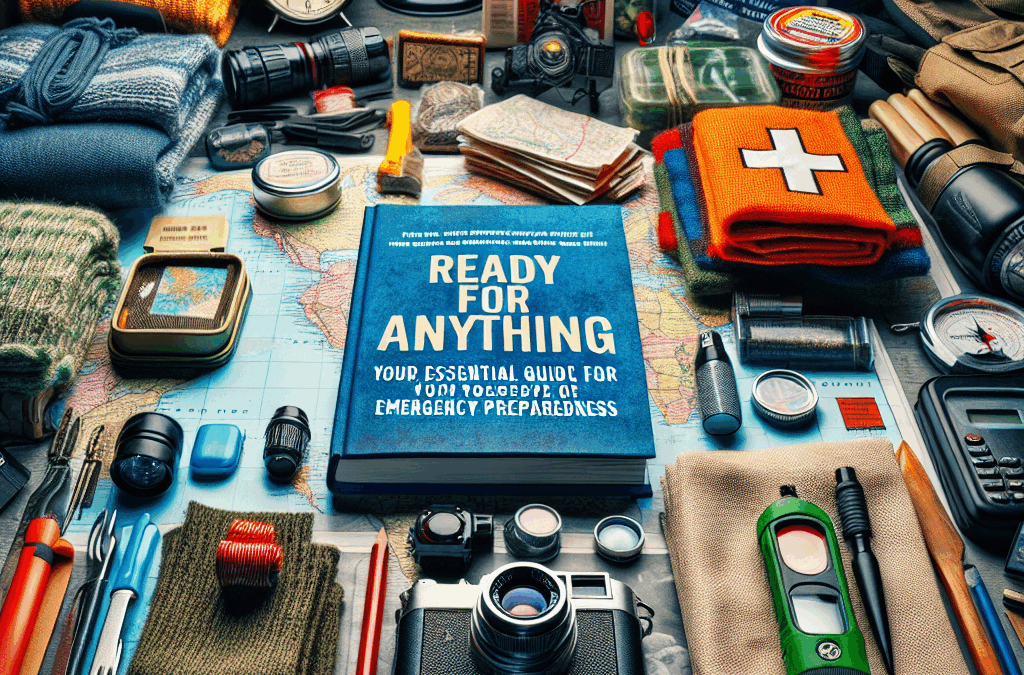In a world where uncertainties lurk around every corner, being prepared for emergencies is no longer an option; it’s a necessity. From natural disasters to unforeseen events, understanding how to respond can make all the difference. Here’s your essential guide to getting ready for anything.
*Understanding the Risks: Identify Potential Emergencies in Your Area**
The first step in preparing for emergencies is knowing what threats are prevalent in your region. Are you in a flood zone? Does your area experience severe storms or wildfires? Each location has its vulnerabilities, so take time to research local risks. Connect with community resources and emergency management agencies that provide insights into potential disasters. Knowledge equips you with the foresight needed to act swiftly when crises unfold.
*Building Your Emergency Kit: Essentials for Every Household**
Once you’ve identified the risks, it’s time to assemble an emergency kit tailored to your needs. Start with basic supplies such as water—one gallon per person per day—and non-perishable food items like canned goods or energy bars. Don’t forget first aid supplies, flashlights with extra batteries, and essential medications. As family dynamics vary, consider including items specific to children, pets, or elderly relatives. The goal is a comprehensive kit that can sustain your household for at least 72 hours during any emergency situation.
*Creating a Family Emergency Plan: Steps to Ensure Everyone’s Safety**
Preparation isn’t solely about gathering supplies; having a well-thought-out family emergency plan is crucial as well. Begin by outlining escape routes from your home and identifying safe meeting points outside if separation occurs during an emergency. Make sure everyone knows how to reach each other using mobile devices or predetermined locations if phone lines fail. Regularly discuss this plan with all family members—especially children—to ensure they understand their roles and responsibilities when panic sets in.
*Staying Informed: The Importance of Communication and Alerts**
In times of crisis, staying informed can be life-saving. Sign up for local alert systems that provide real-time updates on emergencies affecting your area. Familiarize yourself with reliable weather apps and radio stations that broadcast warnings and information during disasters. Moreover, establish communication strategies within your family; designate a primary contact person who lives outside your immediate area should local networks become compromised.
*Practicing Preparedness: Drills and Training for Real-Life Scenarios**
Finally, don’t just prepare—practice! Conduct regular drills simulating various emergencies such as fire evacuations or severe weather responses. These exercises help reinforce actions under pressure while revealing any gaps in your plan that need addressing before real-life scenarios occur. Consider enrolling in basic first aid courses or CPR training; these skills could be invaluable during critical moments when professional help may not be immediately available.
Thank you for reading this post, don't forget to subscribe NOW for FREE!
In conclusion, emergency preparedness involves proactive measures that empower you and those you care about when faced with unexpected situations. By understanding the risks unique to your area, building a comprehensive kit, creating a solid family plan, staying informed through reliable channels, and practicing scenarios regularly, you’ll cultivate confidence amid uncertainty—because being ready means being resilient! Embrace these strategies today; tomorrow may hold surprises you never saw coming!






